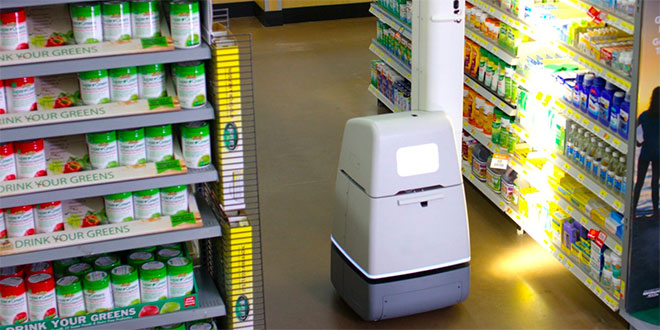Walmart and Target are both using artificial intelligence to streamline their operations, but how each company is making use of retail robots underscores the possibilities and pitfalls of in-store robotic technology, an article from CNN reveals.
Walmart is investing heavily in in-store artificial intelligence (AI). The company will add self-driving robots to scrub the floors of more than 1,860 individual stores by February. Additionally, it will deploy robots to scan shelves at 350 stores and use AI to scan deliveries and sort them by department onto conveyor belts at 1,700 stores.
The CNN article says that operating numerous large brick-and-mortar locations is expensive for Walmart, especially as more customers shop online. By adding more AI to their stores, Walmart hopes to increase worker productivity and control costs.
Walmart says these “smart assistants” will reduce the amount of time associates spend on “repeatable, predictable and manual” tasks. By removing these kinds of tasks, Walmart hopes its associates will be able to offer more direct customer assistance to shoppers.
On the other hand, retail chain Target has a markedly different vision for the role of AI in its operations. The company has added self-checkout and automatic cash-counting machines to hundreds of stores in recent years, CNN says, but CEO Brian Cornell says the company won’t be adding AI to its 1,850 salesfloors.
“You won’t see robots in Target stores anytime soon,” Cornell says. “We really think, even in today’s environment, where people are talking about AI and robotics and different elements of technology, the human touch still really matters.”
Oxford Martin School fellow Carl Benedikt Frey says it makes sense that Target is cautious about investing too heavily in AI. Frey says more than 80 percent of Target’s stores are smaller than 170,000 square feet.
“Tractors were first adopted on larger farms and only later trickled down to some mid-sized ones as prices dropped,” said Frey. “The same is true of robots in warehouses and retail stores.”
Robotic Reality
The rise of AI in retail environments is not without criticism, the article notes.
According to a Cornerstone Capital Group study from 2017, between 6 to 7.5 million existing retail jobs could be replaced by some form of automation over the next decade.
Some retail leaders believe retail chains’ plan for AI to handle mundane tasks while human workers focus on customer service is unfounded.
“The truth is, they are de-skilling jobs and cutting workers’ hours to make a buck providing less service to customers and chipping away at good jobs for hardworking people,” says Marc Perrone, president of the United Food and Commercial Workers International Union.
Walmart says AI has already enabled the company to focus more intently on specific customer needs and shifting its human workforce to new tasks. The company has added 50,000 jobs in the past three years related to new AI possibilities.
“We’re looking at our jobs through the lens of technology and asking ourselves which human tasks add value—and which should be automated,” says CEO Doug McMillon last year. “The workplace is going to look different in a few years—not just in retail, but across the economy.”
 Hardware Retailing The Industry's Source for Insights and Information
Hardware Retailing The Industry's Source for Insights and Information








